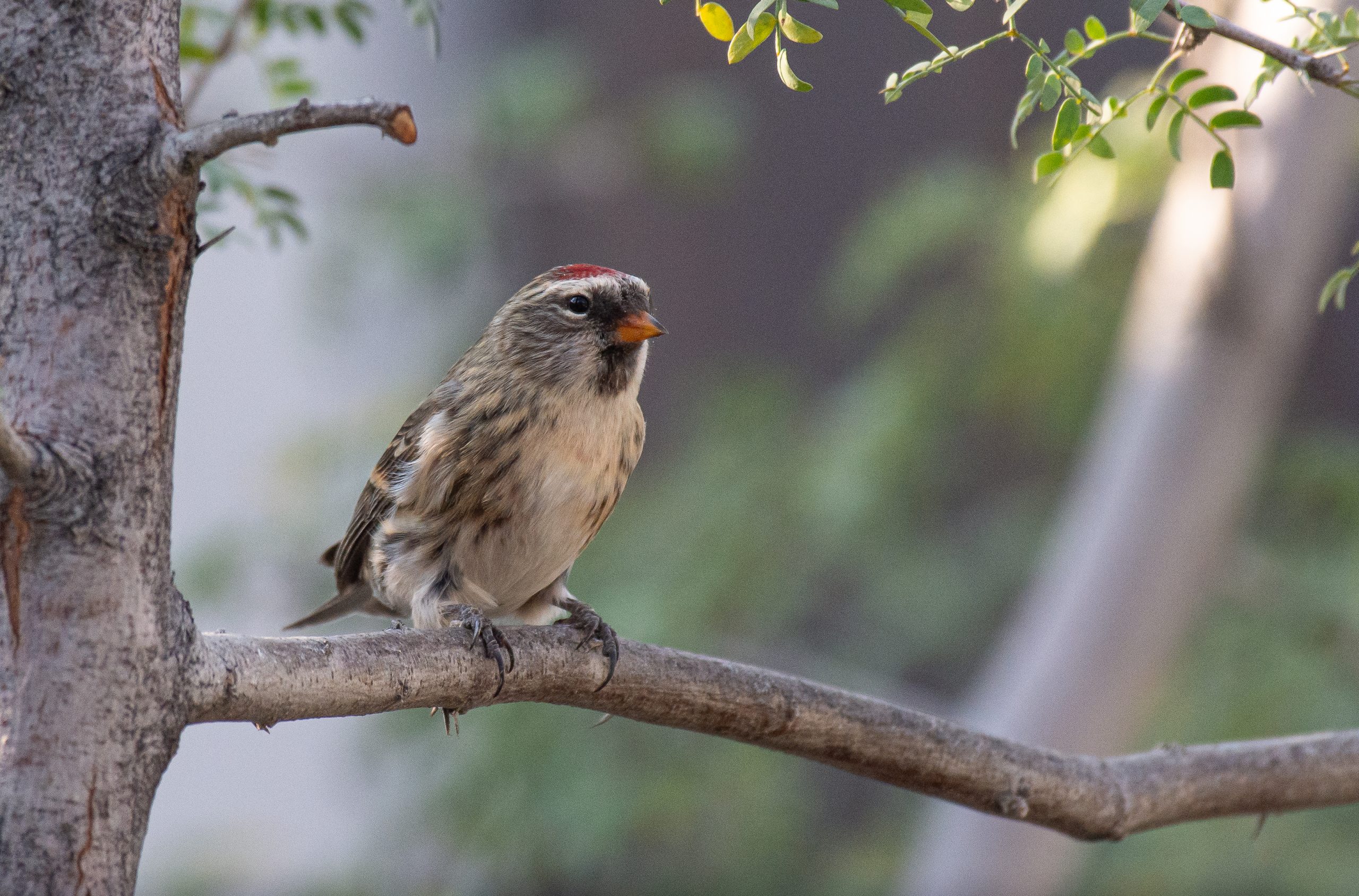By Ryan F. Mandelbaum:
When Tyler Hoar’s new Winter Finch Forecast debuted, he predicted that this would be an exceptional winter for irrupting boreal birds. But no one expected a Common Redpoll to show up at a bird feeder in New Mexico.
The first weekend of October brought mind-boggling finch madness to the southern United States. A Common Redpoll apparently visited a pair of feeders in New Mexico to the delight of local birders. Meanwhile, a pair of Evening Grosbeaks visited a tree on the Florida Panhandle. These records are just singletons, of course, and don’t imply any sort of pattern yet. But set against a near country-wide flight of Pine Siskins plus Red-Breasted Nuthatches closing in on the US-Mexico border, it’s very likely you may soon be seeing Common Redpolls and Evening Grosbeaks of your own.
Common Redpolls breed far north in the tundra, where they use their small, pointy bills to feed on the seeds of birch, willows, alders, and conifers. They rarely overlap with human settlements in the summer, but approximately every other year will irrupt southward into the Midwest and New England… and beyond, where they may travel in single or mixed-species flocks and take up temporary residence at feeders. COVID-19 travel restrictions made visiting the far north and predicting the Common Redpoll’s 2020 movement difficult this year, but Hoar told finch fans to expect a moderate to good flight. Still, this year’s New Mexico appearance is exceptional for this species—Common Redpolls have only been reported in the state a handful of times.
Last week, a single Common Redpoll showed up at the feeder of Randall Edmunds and Beth Cohen in Albuquerque. According to the eBird report, the finch had come to feed on Nyjer seed with lesser goldfinches and house finches, while occasionally drinking from a hanging birdbath. The two didn’t have time to study the bird closely or take photos until October 3rd, when they shared the find more broadly on eBird. They were “pleasantly surprised,” to put it lightly. On October 7, another Common Redpoll, probably the same individual, took up temporary residence at the feeders at Bosque Del Apache National Wildlife Refuge, 90 miles south.
Evening Grosbeaks, meanwhile, aren’t quite as boreal as redpolls; these handsome, large-billed finches inhabit boreal forests across the northern United States in the East, and through the Rocky Mountains into New Mexico and even parts of Mexico in the West. The birds have a complex ecology; like Red Crossbills, Evening Grosbeaks can be divided into several sub-populations based on their flight calls. The species’ range expanded broadly into the East in the late 19th and early-to-mid 20th centuries, perhaps as a result of box-elder plantings or spruce budworm outbreaks. On top of irruptions in response to food supplies, their numbers may jump in response to spruce budworm outbreaks.
This year was already shaping up to be a strong one for Evening Grosbeaks, thanks to severe spruce budworm outbreaks in Eastern Quebec—Tadoussac Bird Observatory observed its highest early fall numbers in 25 years. The birds were once an occasional visitor to Florida during the last spruce budworm outbreak, but have been a rare sight this far south in the past few decades. October 3, birder John Yuhasz noticed a pair high up in a tree. They were scared off by a Sharp-Shinned Hawk, but not before Yuhasz observed the male’s striking yellow plumage and both birds’ large conical bills and white wing patches.
Though overshadowed by the other records, also remarkable is the Red-Breasted Nuthatches’ continued push southward. These tooting honorary irruptive finches have already appeared in South Padre Island, Texas, as well as El Paso and Tijuana. There’s no doubt that Red-Breasted Nuthatches will make it into Mexico this year.
All three of these birds will readily come to feeders. While Red-Breasted Nuthatches aren’t picky, Common Redpolls prefer thistle and nyjer seed, while Evening Grosbeaks go for black oil sunflower seeds. Remember to report these birds to eBird if you find them, and in the case of the Evening Grosbeaks, try to snag an audio recording of their flight call.
Photo Credit Jack Parlapiano
FiRN is a nonprofit, and has been granted 501c3 status. FiRN is committed to researching and protecting these birds and other threatened finch species like the Evening Grosbeak and Rosy-finches, and if you have been enjoying all the blogs and identifying of Red Crossbill call types, redpoll subspecies and green morph Pine Siskins FiRN has helped with, please think about supporting our efforts and making a small donation at the donate link below.

